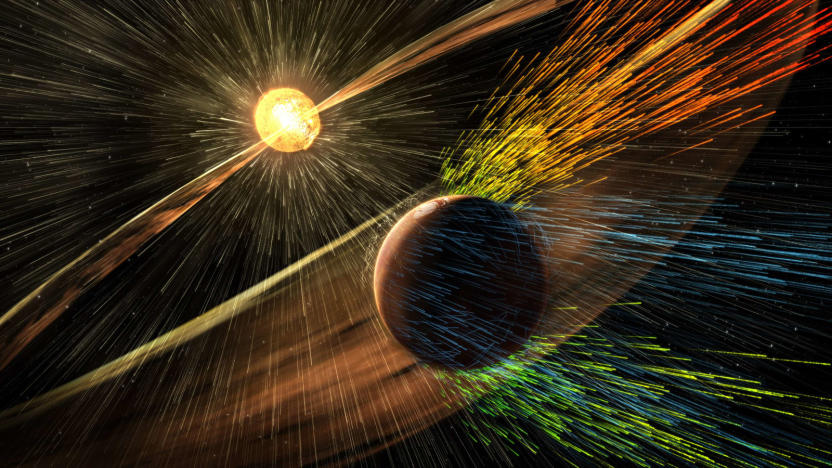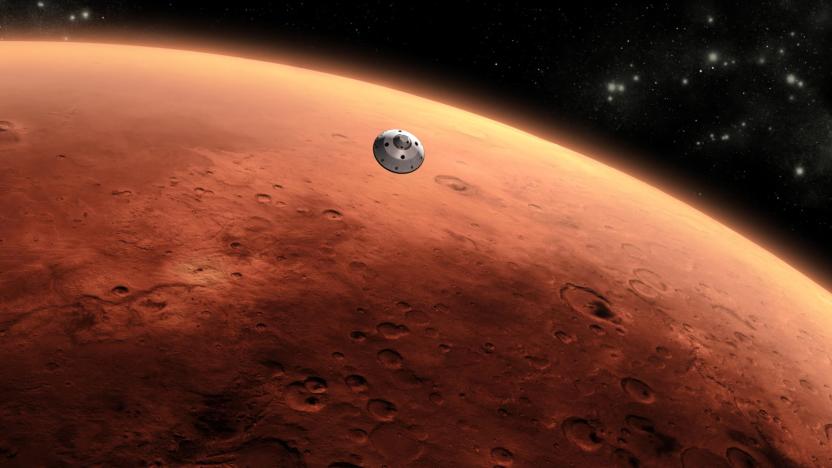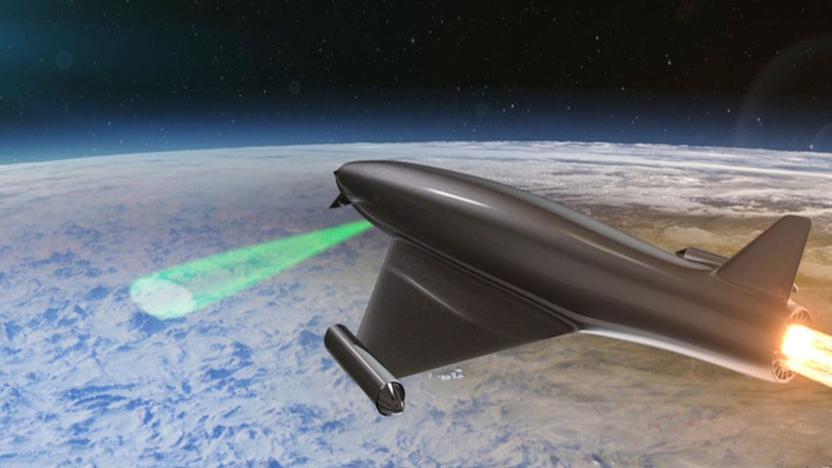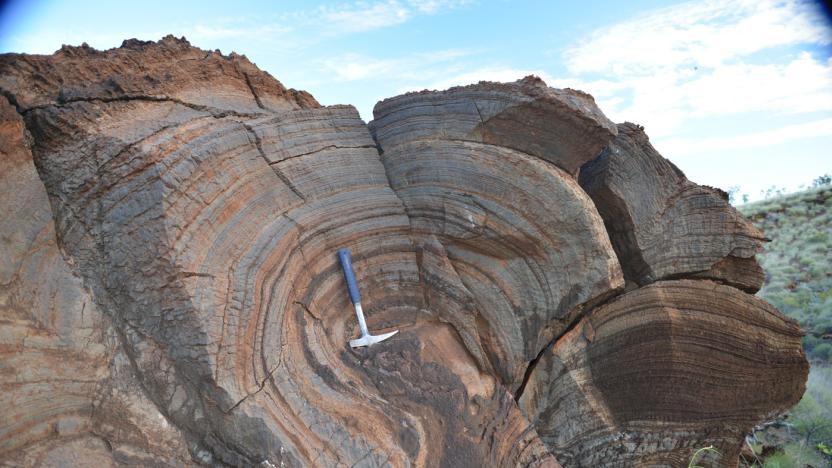Atmosphere
Latest

The future of diamonds is in recaptured CO2 pollution
The program resumed in 1951 and, by 1954, had succeeded in creating the first commercially viable lab-grown diamond. Gem-quality lab-grown diamonds wouldn’t arrive in jewelry displays until the 1980s.

Elon Musk announces $100 million prize for new carbon capture tech
Yet for being among the wealthiest people on the planet, Musk’s philanthropic track record over the years has been paltry compared to the likes of Jeff Bezos.

UK to spend $1.6 billion on the world's fastest weather supercomputer
The UK's weather service, the Met Office, will spend £1.2 billion ($1.6 billion) to acquire the world's most powerful climate supercomputer, the government has announced. That's over ten times more than its current Cray XC40 cost, but it will deliver more timely and accurate forecasts. That could make the difference in knowing whether your flight will be canceled or your street flooded, according to the service.

A banned CFC is destroying the ozone and nobody can find its source
Scientists spent years campaigning for a ban on the ozone-damaging chemical CFC-11, but 30 years after it was phased out in the 1987 Montreal Protocol, someone somewhere is breaking the rules. According to the National Oceanic and Atmospheric Administration, emissions of the banned chemical are on the rise, climbing 25 percent since 2012. By now, production of CFC-11 is supposed to be at or near zero.

Atmospheric harvesters will enable arid nations to drink from thin air
As climate change continues to wreak havoc upon the Earth's weather patterns, formerly lush locales like the American West are finding themselves increasingly parched. Perhaps nowhere is that abrupt arridization more pronounced than in Cape Town, South Africa. Since 2015, the region has suffered severe droughts and the coastal capital of 4 million people has struggled to maintain a steady municipal water supply.

Scientists can't explain a 'worrying' rise in methane levels
The amount of CO2 in the atmosphere reached a record high in 2016, according to the World Meteorological Organization (WMO). Thanks to a combination of human activities and the El Nino weather event, last year's increase was 50% higher than the yearly average from the past decade, driving CO2 to a level that's not been seen for 800,000 years. Average levels in 2016 reached 403.3 parts per million, up from 400 parts per million in 2015.

NASA study will help identify potentially habitable planets
NASA has already found tons of exoplanets around nearby stars, and will spot countless more once the James Webb Space Telescope (JWST) launches. The problem is that scientists aren't exactly sure which planet-star combinations are most likely to support life. A new NASA study has found that planets orbiting small stars like Trappist-1 could retain their oceans for billions of years, even if they're quite close -- provided the star emits just the right amount of infrared radiation.

NASA proposes guarding Mars' atmosphere with a magnetic shield
Ask scientists why Mars is cold and dead and they'll usually point to the death of its magnetic field some 4.2 billion years ago. Without that protection, solar winds gradually stripped it of most of its atmosphere. A NASA-led team, however, thinks there's still a chance to protect what's left -- and human explorers in the process. The scientists have proposed a magnetic shield that would sit at the L1 Lagrange Point beyond the planet, creating an artificial magnetosphere that would deflect solar winds and incoming radiation. Simulations even suggest that the atmosphere would get thick enough to melt carbon dioxide ice at Mars' northern pole, sparking a greenhouse gas effect that would melt water ice and restore some of Mars' oceans. Needless to say, that would be much friendlier to any long-term visitors.

Mars' liquid water may have had an atmospheric 'escape route'
Scientists have long believed that Mars lost its liquid water very gradually, turning into a mostly dry planet over an extremely long time frame. However, they may have to toss that assumption out the window. A University of Colorado, Boulder team has discovered that Mars has an atmospheric "escape route" which may have helped hydrogen drift into space at much faster rates. Mars Express data shows that water molecules float higher than usual during the planet's warmer seasons, avoiding an Earth-like "cold trap" that keeps water close to the ground. Once the molecules are in the middle atmosphere, ultraviolet light helps break them up into oxygen and hydrogen -- and since hydrogen is very light, it doesn't take much for the element to escape Mars' gravity.

Gravity wave ripples across Venus' hellish atmosphere
It took the Japanese atmospheric probe Akatsuki a while, but once it got into orbit around Venus just over a year ago, it immediately spotted a large, bow-shaped disturbance. Researchers now believe the phenomenon was a gravity wave, or atmospheric formation caused by the topography below. The feature is nearly 6,000 miles wide and remained in nearly the same spot for four days, despite scalding surface winds that whip at 250 mph. The unusual nature of the wave led the scientists to conclude that atmospheric conditions on the surface of Venus may be different than previously thought.

Atmospheric 'lens' could shield troops from laser weapons
How do you defend yourself against laser weapons when they fire at the speed of light? BAE Systems has an idea. It's developing Laser Developed Atmospheric Lens technology that, as the name suggests, uses lasers to temporarily ionize the atmosphere to create lens-like structures. If you're facing a laser attack, you just have to form a lens to serve as a refractive shield. The technology could protect both aircraft and land-based forces from deadly blasts, and it could fill other roles as well.

ICYMI: Studying the 1700's clouds for pollution clues
try{document.getElementById("aol-cms-player-1").style.display="none";}catch(e){}Today on In Case You Missed It: Scientists at CERN constructed a large chamber to replicate the cloud environment before the world's Industrial Revolution got its start after 1750. The thought had been that there were far fewer clouds on Earth then, but already results are pointing to a different reality that could help guide present day modeling of global climate change. If you want to take a peek at the continent colonizing study showing we were taught lies in history class, that's here. The toaster of your five-year-old's dreams? That's here. As always, please share any interesting tech or science videos you find by using the #ICYMI hashtag on Twitter for @mskerryd.

The After Math: Buyer's remorse
You can't always get what you want, even if you pay good money for it. Disney has decided to drop its Infinity franchise and the studio that developed it. A judge ordered Lyft to double its class action payout to drivers. And Earth's atmosphere has doubled -- that's right, doubled -- in weight since we first got it. That's it, I want to talk to the manager.

Earth's early air weighed half as much as it does today
Scientists have long postulated that the early Earth's atmosphere must have had considerably higher pressure than it does today, since the sunlight was fainter. However, researchers have made a discovery which suggests that this theory is way off the mark. By studying the size of bubbles in 2.7 billion-year-old lava flows, they've found that the air pressure was less than half what it is now -- in other words, the atmosphere was much lighter back then. As there's evidence of liquid water at that time, the Earth must have had less nitrogen and more greenhouse gases (such as carbon dioxide and methane) preventing heat from escaping into space.

NASA's closer to knowing why Mars' surface is cold and dead
It looks like NASA's figured out one of the reasons why Mars isn't fit for human -- or any other kind -- of life. The space agency held another press conference to discuss why Mars has turned from what was thought to be a wet, lush planet (that might have contained surface life) into a cold, desolate place. The likely culprit? Solar winds. With a little help from the MAVEN probe (Mars Atmosphere and Volatile Evolution), researchers were able to figure out how much of the planet's atmosphere is being stripped away by solar winds -- around 1/4 pound of gas every second. Bruce Jakosky, MAVEN's principal investigator at the University of Colorado, likened the atmospheric loss to taking a small amount of coins out of a cash register every day -- at first it's insignificant, but over time can have a big impact.

Watch gravity waves ripple through Earth's atmosphere
You might think of gravity as an invisible force here on Earth, but that's not entirely true... if you have the right computer simulation, that is. Researchers at the National Center for Atmospheric Research have developed a climate model that shows the gravity waves in the upper atmosphere, where their amplitude is strong enough to create huge ripples. The trick is a higher-resolution model that replicates the waves at their source, and follows them on their way up. As you can see here, the results are dramatic -- gravity is virtually invisible near the surface, but it's impossible to miss when you're 60 miles up.

Mars probe finds super-active auroras and mystery dust clouds
As much as humanity knows about Mars, the planet is still chock-full of surprises. Just ask NASA: University of Colorado researchers using its MAVEN probe have discovered phenomena in the Martian skies that you would never see on Earth. For one, there are auroras that are so energetic (their electrons are 100 times more powerful than a spark of house current) that they plunge far deeper into the atmosphere than back home, or even other places on Mars. Scientists suspect that the Sun is to blame -- Mars doesn't have a protective magnetic field like Earth does, so the solar wind sometimes hits with full force.

Here's what a year's worth of carbon dioxide looks like
It's easy to talk about carbon dioxide (CO2) emissions and their effect on our planet, but visualizing them? That's hard. Thankfully, NASA has stepped up to the plate with a computer model that shows how CO2 travels across Earth's atmosphere in the space of a year. As you'll see in the clip below, a lot of gas in the northern hemisphere originates in major pollution centers across Asia, Europe and North America before it drifts across the globe. The abundance of plant life in the spring and summer quickly cuts down on CO2 levels, but the chemical comes roaring back once fall arrives -- and the concentrations are higher than NASA would like to see.

Chaos Theory: First five favorite moments in The Secret World
I've been asked many times why I love The Secret World. And I have always answered enthusiastically about my favorite parts of this unique game. But a more interesting take on the question presented itself recently: When did I love The Secret World? This query gave me pause as I thought back to the point at which my I'm-having-fun feelings turned into bona fide squeals of delight and shrieks of surprise. And I came to the conclusion that all I really needed to love The Secret World I learned in Kingsmouth. If you think about it, that's a pretty good thing. Since Kingsmouth is the first real adventure zone after your tutorial (I'm not counting the faction cities), having experiences that grab folks' interest there is vital to producing long term-players. In a game, just as in a book or a movie, it is important to hook your intended audience early on so its members stick around to see what's going to happen next. And hook me Kingsmouth did. The following are the first five moments that captured my heart (and mind -- this is TSW we're talking about, after all). They are by no means the be-all, end-all of the game; they are very simple, in fact. But these particular moments did help define my appreciation for the game and ensnare me enough to keep me coming back for more.

Scientists prove dwarf planet Ceres contains water
Scientists have long thought that the dwarf planet Ceres might hold some form of water, but they've only had indirect evidence at best -- until today, that is. An ESA-led team has used signal fluctiations to confirm that the asteroid belt planetoid is spewing water vapor from two points on its surface, creating both ice and a rudimentary atmosphere. It isn't clear what's producing the vapor, although researchers believe that geysers, thawing or icy volcanoes may be responsible. Whatever is behind Ceres' behavior, the discovery could improve our understanding of how water reached Earth. We'll get a much clearer picture of what's happening in early 2015, when NASA's Dawn probe swings by to map the mini-planet's water activity in greater detail. [Image credit: ESA/ATG medialab/Küppers et al.]






